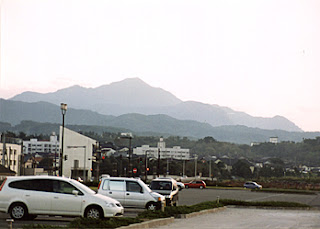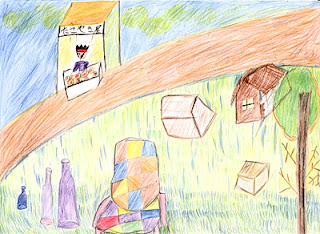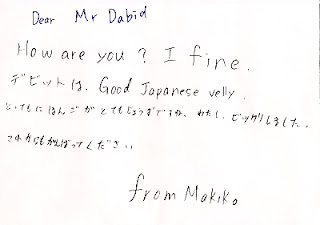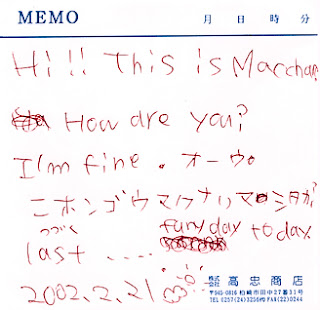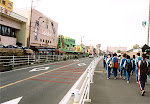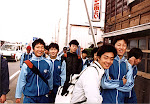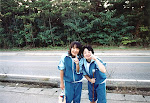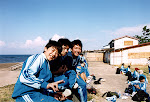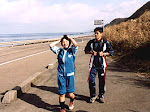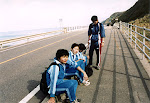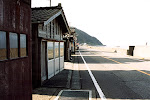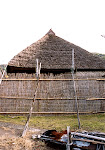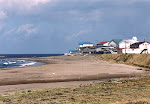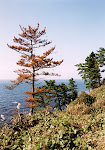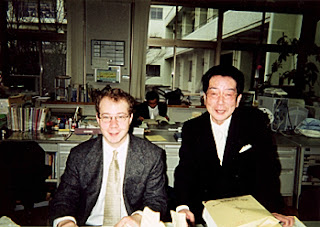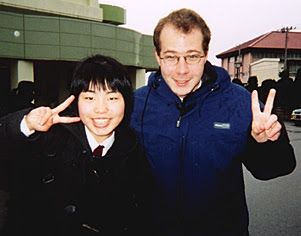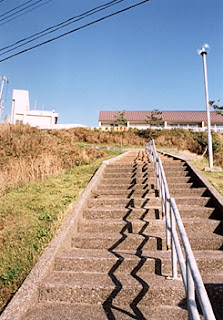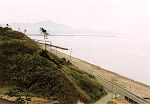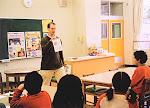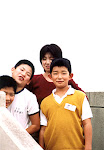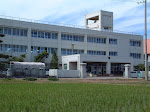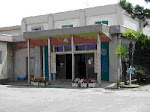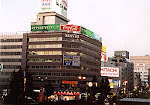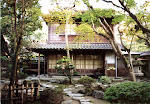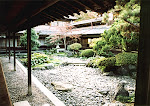![]() EN
EN
Photo: Mt. Yoneyama towers over Kashiwazaki City, Niigata Pref., Japan, next to the Sea of Japan, very close to my apartment.
I lived in Kashiwazaki City, Niigata Prefecture, Japan from August 2001 to August 2004. I was an Assistant Language Teacher (ALT), and was placed in Kashiwazaki through the JET Program (Japan Exchange and Teaching Program). As you have seen from my other pages, especially my travel section, I have traveled quite a bit before, especially in Europe. Japan, however, is totally different from any other country I have ever been in. Adapting to Japanese culture was not always been so easy, but it was a fascinating experience. After the first three months I started getting used to the cultural differences and started traveling outside my city more. Although I decided not to live in Japan permanently, I really enjoyed my life in Japan, and it was a valuable experience.
Kashiwazaki City is relatively small (I was told it had about 87,000 residents). The biggest thing of note there is that it hosts the world’s largest nuclear power plant. The buildings are low rise, and the city is directly on the Sea of Japan coastline of Japan, on the opposite side of the Main Island (Honshu) from Tokyo. On one side of the city there is the Sea of Japan, and behind it (on the other side) you have the mountains, dominated by Mount Yoneyama. It rains here a lot, and it is extremely humid. However, the surrounding mountains get a lot of snow, for which reason this area of Niigata Prefecture is called “snow country” (Yuki Guni in Japanese), although Kashiwazaki itself sees little snow because it is next to the ocean. English is not very widely spoken in this area of Japan. However, people are pretty friendly, and I did manage to pick up the language a little bit. The photo above was taken near my apartment. As I mentioned, English is not spoken here by very many people. Sometimes when they do speak it, I had trouble understanding it! This has made communication difficult at times, but I learned to just laugh it off, and this experience has made me more patient. Also, English signs are common here, with many bad misspellings and usages, like “Beer Holl”, and “Hair Saron”. The second-hand store is called “Off House”, and the International Association is in a place called “Joy House”. Some of the t-shirts and signs I have seen in English here are so strange that I probably should not print them here! My students have also said some really funny things to me, and they have a tendency to ask very personal questions, as well. There is a website where you can check out Japanese English (“Jenglish”) at its finest and that will give you some idea of how surreal life can be in Japan sometimes!
I worked in Kashiwazaki as an Assistant Language Teacher (ALT), and my employer was the Board of Education of Kashiwazaki City, which is in Niigata Prefecture, in Japan.
The definition of exactly what an ALT is and does seems to vary everywhere, and in my case I worked at many different schools, so I was at a different place every day. I worked with many different teachers and countless students. I worked at both Junior High Schools and Elementary Schools. In Japanese, Chugakko is Junior High School, and Shogakko is Elementary School.
Some Schools that I Taught at
Dai-Ichi Chugakko (Junior High School Number One)
Photo: Kashiwazaki Dai-Ichi Chugakko.
I have some great memories at Dai-Ichi. Here I will try to share some of the highlights of my time there. First of all, I knew some of the Dai-Ichi students better than the students at most of the other schools. Look here to see some of the notes that they wrote me!
Here is a drawing that Makiko made for me. It shows one of the local festivals in Kashiwazaki. The other picture is the note that she wrote me on the back of the drawing.
Some of my fondest memories are those of my shy students trying to communicate with me in English.
Isn’t this sweet? I was so proud of my students when they did this. Teaching English in Japan can be an odd phenomenon. In class, the students tend to be very polite and obedient, and speak only when spoken too. However, it is difficult to engage them in conversation because of this–they are afraid of communicating because they fear making mistakes. However, during lunch or after school sometimes, when they are under no obligation to do so, some of them approached me and chatted with me. Once in a while, the rare student who misbehaves in class will be wonderful when you see him or her in club practice after school, and the student who makes trouble for the Japanese teachers will behave very well around the foreign ALT.
Here is a note from Ma chan, one of my other students at Dai-Ichi:
One odd thing that I noticed is that the female students, on the whole, tended to approach me more and chat with me more than the male students did. I am not sure why this is. Once or twice, female students also asked me some bizarre private questions or even flirted, but this was harmless enough and I was able to ignore it.
Marathon Walk at Dai-Ichi
I had the chance to attend some events at Dai-Ichi that I did not have the chance to see at other schools, since Dai-Ichi was my base school at the time. One of these was the “Marathon Walk”, a special event that I took part in October 2001, the fall of my first year there. The photos below will show you the highlights of the trip. Schools in Japan hold many important events throughout the year, including sports festivals and cultural festivals, in addition to the opening year and graduation ceremonies. The hike went for 42 km (about 27 miles) along the Sea of Japan coast from Teradomari to Kashiwazaki. The hike followed the seaside road. At the beginning, we assembled in Teradomari where the teachers gave a pep talk. The walk lasted most of the day, and all of us were exhausted at the end (my feet were killing me by the end). As you will see in the photos, the PTA cheered us on, and the teachers often spurred us on. The scenery was beautiful. Different people finished the walk at different times, and those who finished first waited for the rest of us. When I arrived at the end of the day (I was the last one to finish), the entire student body was waiting for me, and as I came in, they all cheered! I believe this illustrates well the concept of how Japanese people think about society–they focus in the entire group, not just the individual. They waited until everybody was done before declaring the event finished. This was a fascinating and touching experience for me. Look at the photos!
First row, left to right: Gathering and pep talk at the beginning of the marathon walk at Teradomari; beginning of the walk in Teradomari; group of Dai-Ichi schoolboys on the marathon walk.
Second row, left to right: “CHEEZU!!”; finally time for a lunch break; happy to have a break!
Third row, left to right: Dai-Ichi PTA cheers us on; Ganbatte ne, Shu Chan! (Hang in there, Shu!); “There will be time for rest later!”
Some scenery that I saw along the route along the Sea of Japan coast during the Marathon Walk:
First row, left to right: a typical Japanese house, which I found along the coastal route. Notice the Bonsai trees, and the distinctive doorway and rooftop; row of buildings along the seaside road; empty road and hill along the Sea of Japan.
Second row, left to right: restored historical hut with thatched roof; quintissential Japanese fishing village; houses and the beach.
Third row, left to right: fall leaves at our rest stop (the trees here are a different style than those in my home region in the USA); a small waterfall along the way that I nearly missed.
Graduation Day at Dai-Ichi:
Left to right: this is me in the office with one of the Japanese language teachers on graduation day; here I am with one of my graduating ninth graders outside the school after the graduation ceremony. This was in March 2002.
Takahama Shogakko (Takahama Elementary School)
Takahama Shogakko, on the Sea of Japan coast.
I wanted to briefly mention this school, because I taught there during my first year in Japan. I visited there once every two weeks and taught classes as well as English Club. This school was very special to me. It is perched in a dramatic location above the Sea of Japan, with beautiful views all around, and it had only 22 students at the time. Look at these photos — I believe this was a wonderful environment to teach in!
Left to right: view of the beach and mountains from Takahama Shogakko; view of the beach; photo of me teaching English at Takahama Shogakko in Fall 2001; English club teacher with Takahama students on the rooftop.
Other Schools:
Here are some photos of some of the other schools that I visited in Kashiwazaki City:
First row, left to right: Higashi Chugakko (East Junior High School), which was one of my regular schools in my second year and briefly my base school for part of my third year; Makihara Shogakko (Makihara Elementary School); Arahama Shogakko (Arahama Elementary School).
Second row, left to right: Minami Chugakko (South Junior High School); Arahama Shogakko students in front of their school; drawing of me teaching English together with Satoko Tamura, one of the Japanese teachers of English, at Minami Chugakko, as drawn by one of our students there.
Places in the Surrounding Area
Here are some photos and details from places outside of Kashiwazaki but still within Niigata Prefecture. These were compiled over time, and are not well known outside the area, since it is not so touristy.
Niigata City
Niigata City is the capital of Niigata Prefecture, the state that I worked and lived in. Niigata City is pleasant, although it’s not a mecca for tourists.
Left to right: Downtown Niigata City, by the train station; Bandai Bridge; store in downtown Niigata City.
Northern Culture Museum
This museum, just outside of Niigata City, shows rural life in that area as it was during the 19th Century. It is the former family estate of the Itoh family, one of the local landowning families. It has some fascinating architecture!
Left to right: manor building; triangular teahouse-this teahouse, and everything in it, is shaped like a triangle; traditional rock garden designed by a gardener from Kyoto-it is part of and is surrounded by the main manor house.
JET Program Links
- The newest official JET Program Website.
- I Think I’m Lost, a newer, smaller forum for people who are on the JET Program or living in Japan.
- Every Situation is Different (ESID), a website with parody comic strips about the JET Program.
- Let’s Japan, a website that talks about life as an English conversation school teacher, like GEOS, NOVA, etc.
JET Program Teaching Links
These websites provide JET Program teaching ideas, and give you an idea of what teaching on the JET Program is all about.
- Edochan’s “Three Wise Monkeys” homepage of teaching ideas from Tochigi Prefecture.
- “Genki English”– a homepage with lesson plans and materials for Elementary School teaching, put together by two former JET Program participants.
Japan News and Information Links
These webpages give news and information about events in Japan, and insights into life in Japan.
- Japan Today’s news and discussion site, which gives headlines from Japanese news.
- Yuichi Yamamoto is a semi-retired Japanese businessman, who is fluent in English, and maintains an English-language news blog about Japan. It is a fresh look at the headlines, and sometimes very critical in nature. This is very unusual for Japanese news sources. Check it out! Tokyo Free Press
- Debito Arudou (David Aldwinckle) is an American who became a Japanese citizen. His website discusses many issues pertaining to foreigners’ rights in Japan, and life in Japan in general. It also talks about his social activism, including his discrimination lawsuit against a bathouse. Very fascinating reading!
- Engrish.com is a website dedicated to the subject of “Japanese English” (Jenglish). It shows some very amusing examples of Japanese companies using English to advertize products and services (as well as English t-shirts and other products) without having it proofread, with hilarious results!

